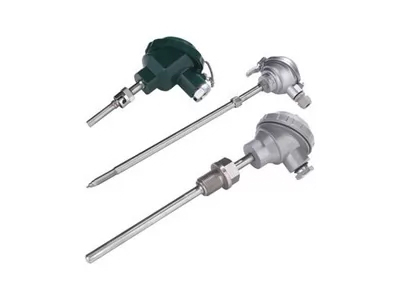Thermocouple and RTD
Thermocouples
A thermocouple is made from two dissimilar metal wires. The wires are are joined together at one end to form a measuring (hot) junction. The other end, known as the reference (cold) junction, is connected across an electronic measurement device (controller or digital indicator). A thermocouple will generate a measurement signal not in response to actual temperature, but in response to a difference in temperature between the measuring and reference junctions. A small ambient temperature sensor is built into the electronic measuring device near the point where the reference junction is attached. The ambient temperature is then added to the thermocouple differential temperature by the measuring device in order to determine and display the actual measured temperature.
RTD
To greater or lesser degrees, all electrical conducting materials have some amount of resistance to the flow of electricity. When a known electric voltage passes through a conductor, the resistance varies based on the temperature of the conductor. This resistance can be measured and will correspond to a specific temperature. While various elements are affected by temperature in different ways, platinum is commonly used in an RTD due to its purity, linearity and stability over a wide range of temperatures. An electronic readout device, such as a controller or digital indicator designed to measure resistance, is required for use with RTD sensors.
All Rights Reserved. Microsystems.


